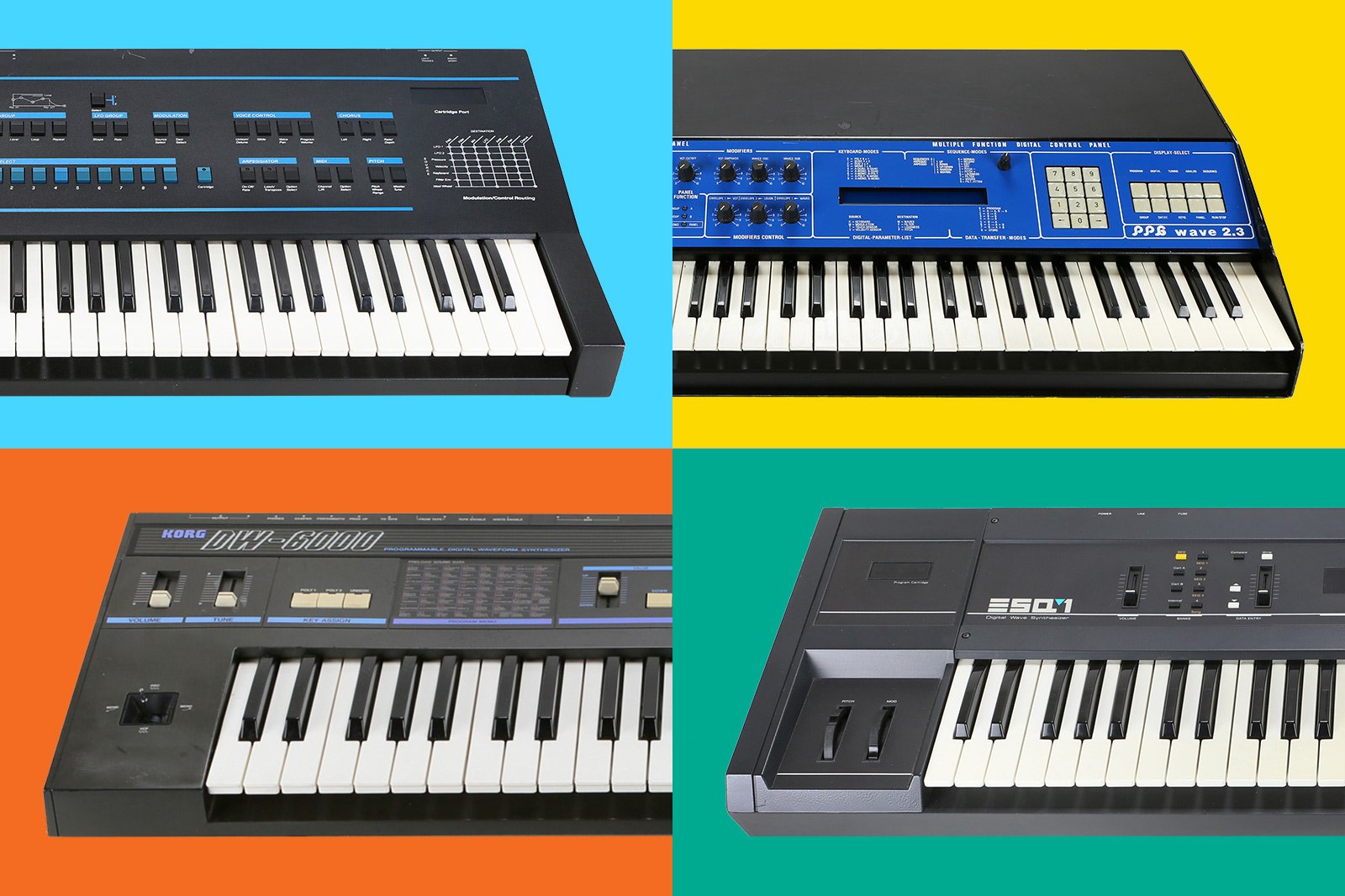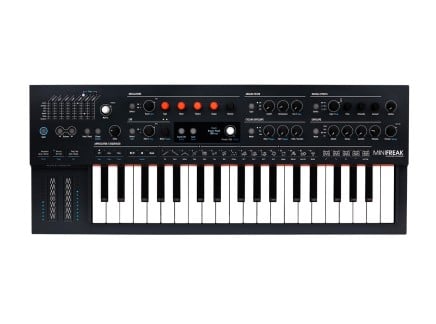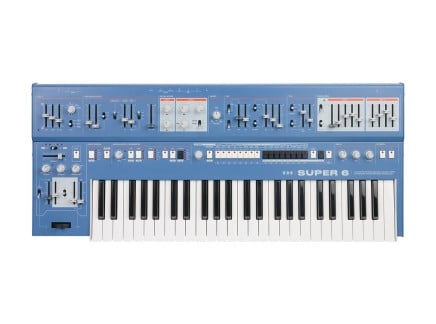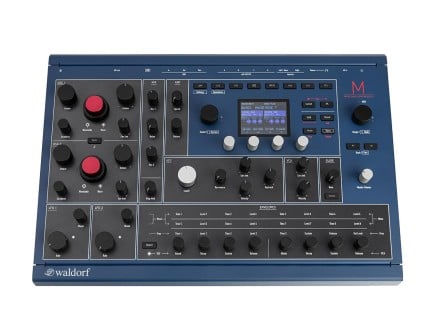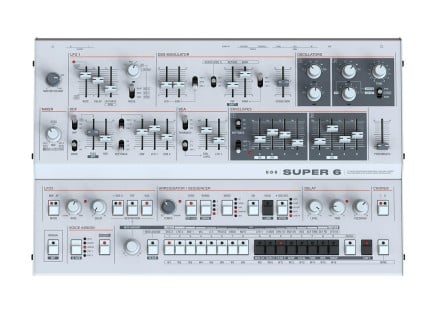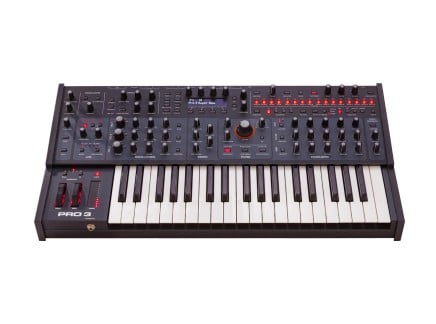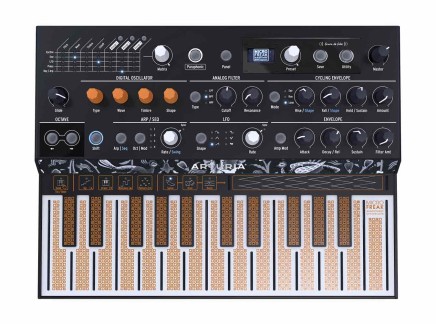While the analog versus digital debate seems to rumble on relentlessly in certain corners of the internet, there’s a quiet corner of the real world where they’ve been getting along just fine for over 40 years: in hybrid synths. In other words, we have analog, digital, and hybrid synths, and it’s worth taking a minute to differentiate between them.
Analog synths have an all-analog signal path, so even though there may be digital control of some functions like envelopes, LFOs and even the tuning of the oscillators, everything you hear has been produced by analog circuitry. A Juno-106, for example, is an analog synth, but has digital control of its oscillators. A Prophet 600 has notoriously slow digital envelopes, but remains an analog synth—as everything you hear has been produced through analog voltages, even if modulated digitally.
A fully digital synth has no analog circuitry: everything you hear is produced by digital signal processing (DSP). The Roland D50 and Yamaha DX7 were two of the most successful synths of the 1980s. Both approached synthesis in their own way, and both were fully digital. Moving into the 1990s and beyond, synths like Nord Leads, for example, may look and feel like an analog synth…but in actuality, they are digital, as everything you hear is calculated by DSP. And of course, every software synth ever created was and always will be a fully digital affair.
So, then, what's the deal with hybrid synthesizers?
What is a Hybrid Synthesizer?
Hybrid synths most commonly take the flexibility offered by digital oscillators and process the signal through analog filters. It’s not something we really consider these days, but back in the 1970s, analog synths were huge, heavy, and extremely expensive. The more complex the analog circuitry, the heavier and more expensive the synth. Digital synths offered the potential for more complexity in a smaller package, but at the time, DSP didn’t have anywhere near the power required to accurately emulate an analog filter.
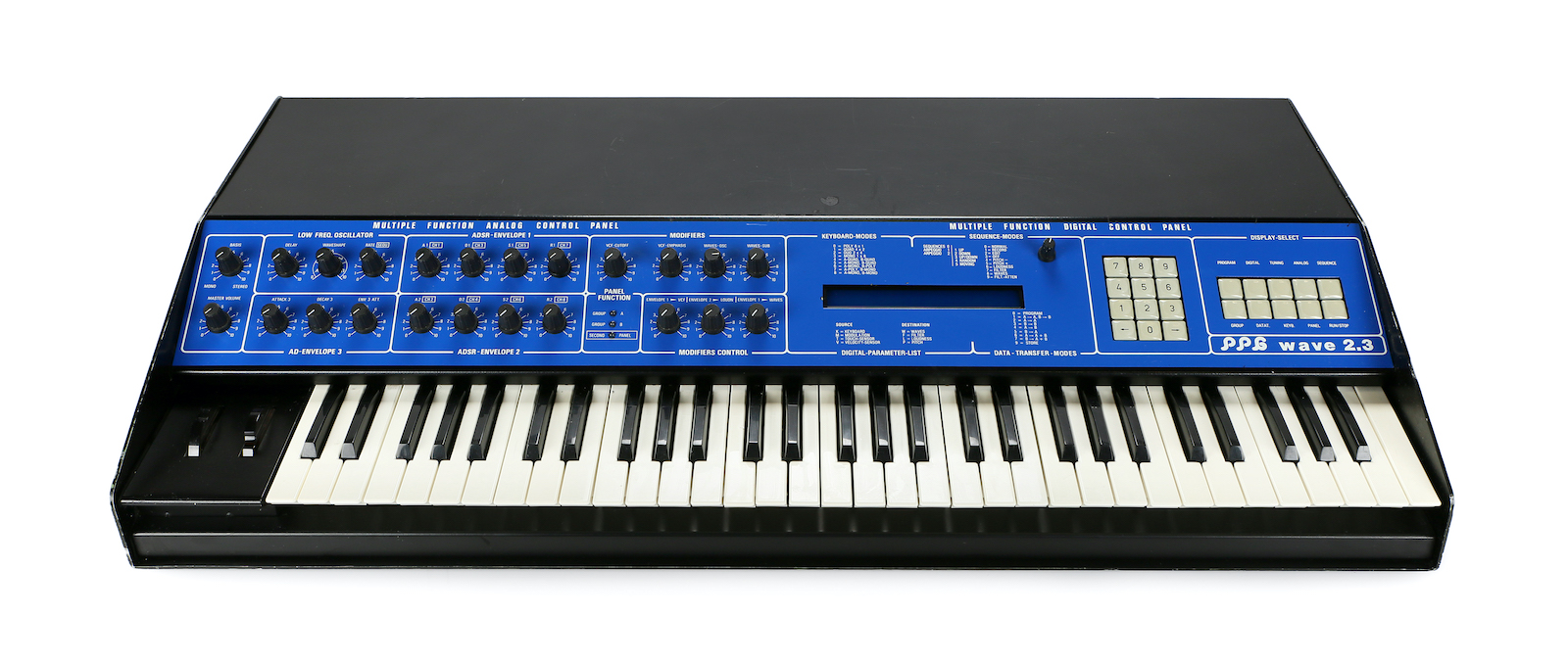
Wolfgang Palm and his company PPG are credited with producing the first commercially available hybrid. He had originally produced an all-digital wavetable synth called the 360 Wave Computer in 1977, but only sold around 40 units. However, the introduction of the analog filter to the system in 1981 gave birth to the now-legendary PPG Wave 2, the first commercially available hybrid synth. The use of wavetables enabled a huge variety of tones within even a single patch, and the addition of the filter allowed keyboard players of the time to feel more comfortable editing. It was something they were more familiar with, just like using a subtractive analog synth.
The PPG could produce a whole host of tones that were previously unobtainable by analog synthesizers, which typically used only the standard sawtooth, sine, triangle, and pulse waves, and so on. A wavetable oscillator, on the other hand, uses single-cycle digital samples of a sound, so we’re instantly into a whole new realm of possibilities. The potential for sound design is then multiplied by placing the waveforms into a table containing a number of waveforms that can be scanned through using envelopes, LFOs, keyboard aftertouch, and more; hence the name "wavetable," a scannable table containing waveforms.
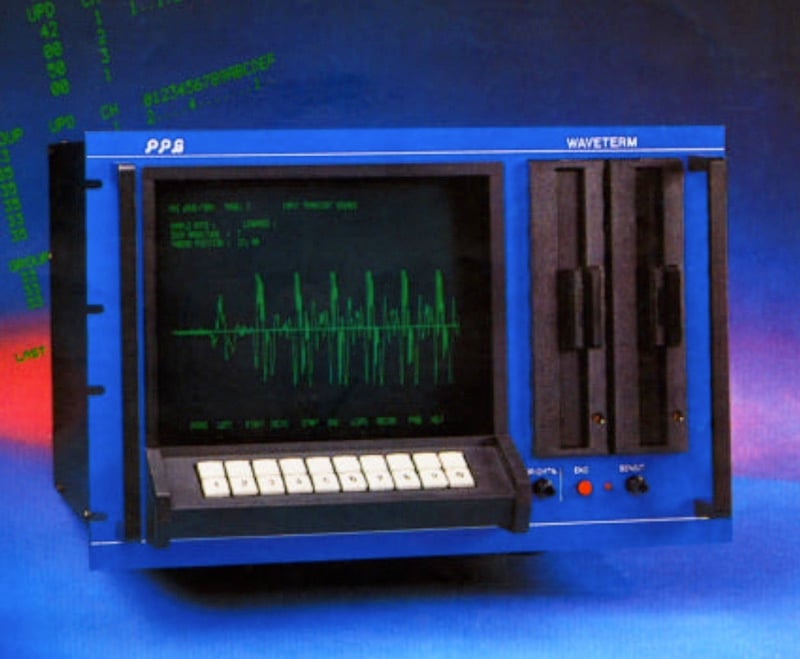 The PPG Waveterm; image from original product brochure
The PPG Waveterm; image from original product brochure
A single patch on the Wave, then, can contain a huge variety of tones. We can, for example, create a wavetable using a sync tone from a synth by gradually changing the tuning of the oscillators and sampling a series of waveforms that represent the sweeping sound of a typical sync tone. If we then modulate through the wavetable with an envelope, we recreate the same effect—but using only a single oscillator. We can do the same for pulse width modulation or a resonant filter sweep. There are, in fact, wavetables replicating all these in the PPG. This is, however, a very basic example as we’re not limited to synth tones, we can sample anything. PPG eventually took this a step further, introducing an addition to the system called the Waveterm. This was a separate piece of hardware on which you could create your own wavetables and was in effect an early hybrid sampler, using digital samples and analog filters.
The PPG therefore gave us the ability to leave the limitation of analog oscillators behind and have a choir or orchestra in our synth, albeit a noisy 8-bit version. It was, however, an expensive bit of kit, costing $7,000–10,000, and suffered as a consequence when more affordable digital synths swamped the market later on in the decade. Although PPG never saw the end of the decade, its classic wavetables were ported into Waldorf’s range in 1989, which includes a number of classic hybrids like the Microwave I & II, and WAVE plus its current modern hybrids, the Quantum and the M.
Fortunately, the demise of PPG was not the end of hybrid synths. In 1985, the Korg DW8000 and Ensoniq ESQ-1 were released, followed by the Sequential Prophet VS 1986 and the updated ESQ80. These all use similar principles, in that they employ single cycle samples, although none can scan through a wavetable—each oscillator plays a single waveform for the duration of the tone. The DW8000 reduced costs by only containing 16 waveforms in total, a vast reduction on the 32 tables each containing 64 waveforms (that’s 2048 in total) in the PPG Wave 2. The Ensoniq added a third oscillator and transwaves, similar to PPG’s transient samples from the Waveterm, so it was a little more complex than the others.
The Prophet VS had 4 oscillators that could be blended via the LFO, envelope, or manual control using the joystick. Its party trick was that, by modulating through all four oscillators with each playing a different waveform, you could produce complex, evolving patches. All of these synths are still held in high regard due to the quality of their sound, of which the analog circuitry plays a pivotal role. Ironically, in the 1980s when digital was perceived as the modern pinnacle of synth design, they were sold on their digital credentials. The front panel of the Prophet VS even proudly declares that it’s a "digital vector synth," not a mention of the analog circuitry…that was old tech! But in 2023, a Prophet VS in decent condition could cost you well over $4000. It’s the hybrid architecture and analog filters that help it demand such high prices. (Editor's note: if you want to learn more about the Prophet VS, be sure to check out our in-depth article about its history and inner workings!)
Hybrid Synthesizers in the Modern Day
Technology has moved on since the mid '80s, but analog filters are still held in higher regard than their digital counterparts by a large swathe of the synth community. Digital oscillators, on the other hand, are generally appreciated for what they are, not as a direct competitor to analog, and have developed further in complexity and sound quality. We have moved on a fair bit from eight-bit, 128-sample wavetables and now have a whole host of options. If you’re looking at hybrid synths, we’re fortunate enough to have a large number of modern, more reliable and cheaper alternatives.
The Minifreak from Arturia is a great example of versatility in oscillator design, with six voices, each having two digital oscillators and an analog low pass filter. It has 22 oscillator modes, each giving easy access to modulation options that would require either a lot of patching a mod matrix or simply would not be possible on an analog synth. There is the mathematically-modelled Karplus-Strong oscillator, a favourite on modular systems—and in fact, there are oscillator models from Mutable Instruments and Noise Engineering. It also has virtual analog waveforms, with simple controls for blending different waveshapes, sub levels, and waveshapes. It’s also got FM, Supersaw, Ring Mod, as well as a range of filters…yes, filters in the oscillators! So you’re not limited to the single LP analog filter.
Let's not forget the Sequential Prophet X, a hybrid which uses samples plus synthesis, like the vintage Prophet 2000. This takes the wavetable concept to a new level, with 2 oscillators playing back 16-bit 48kHz samples direct from SSD, combined with 2 more standard oscillators all via a stereo analog filter and VCA. Plus, if pre-loved synths are more in your budget, the older Sequential Prophet-12 had 16 voices, four oscillators per voice, plus a sub. It could produce up to 60 waveforms simultaneously, and is effectively two six-voice synths in a single package.
Versatility and flexibility are one consideration but the other is sound quality. Synths like the UDO Super 6 and Novation Peak and Summit use FPGA oscillators. These run at much higher rates than traditional digital oscillators, which could produce unwanted digital artifacts like aliasing. This is especially noticeable when modulating at audio rates, something the 1980s machines didn’t attempt. UDO states its Superwave oscillator core is sampled at 50MHz, which is considerably faster than the 48kHz or 96kHz clock rates older digital oscillators will use. Novation uses oversampling at 24MHz, 512 times the traditional rate, in its FPGA New Oxford Oscillator. The higher rates also allow for LFOs to run into audio rates, which again increases the modulation flexibility of the modern hybrids.
And if your patch needs a little more analog drift, all these synths have options to add random variability to the oscillator tuning to replicate the behaviour older VCOs.
The Waldorf M is a different take on a new hybrid, this one is here for anyone lusting after those vintage PPG and Microwave tones, including a classic eight-bit mode to add those subtle digital artifacts rather than eradicate them. You can also activate the infamous ASIC "bug" from the classic Microwaves that was caused by a numeric overflow error—creating a unique, rather lovey, crunchy distortion. Although not a clone of a PPG, it does a great job of emulating the tone, and can import vintage Microwave sysex, so if you’ve ever owned a Microwave, you can import your patches directly. As mentioned earlier, it contains all the classic 32 PPG wavetables, plus 64 more and the ability to load your own. As of the 1.08 firmware, it can also play PPG transwaves, meaning you can have one shot or loopable samples in there as well, just like the PPG Wave 2. That’s all getting a bit geeky, but in effect if you really want a PPG but can’t afford one (and at over $15,000, who can?) the M has you pretty much covered.
The latest addition to the market is the Groove Synthesis 3rd Wave—and you could be forgiven for thinking it’s the PPG WAVE 3. This also contains eight-bit wavetables based on the original PPG but shifts things up another gear with 48 new 96kHz high-resolution anti-aliased tables, plus room for 16 more. With a long list of additions and a price tag to match, it demonstrates that hybrid is a choice, not a compromise.
The success of modern hybrid synths is that they employ the best of both the analog and digital worlds. They have the versatility of digital from pristine audio quality to dirty distortions and artifacts of the classics, all wrapped up in the smoothness of an analog filter with maybe a touch of overdriven warmth and distortion. They’ve been around for over 40 years, and I can’t see them going anywhere soon.

